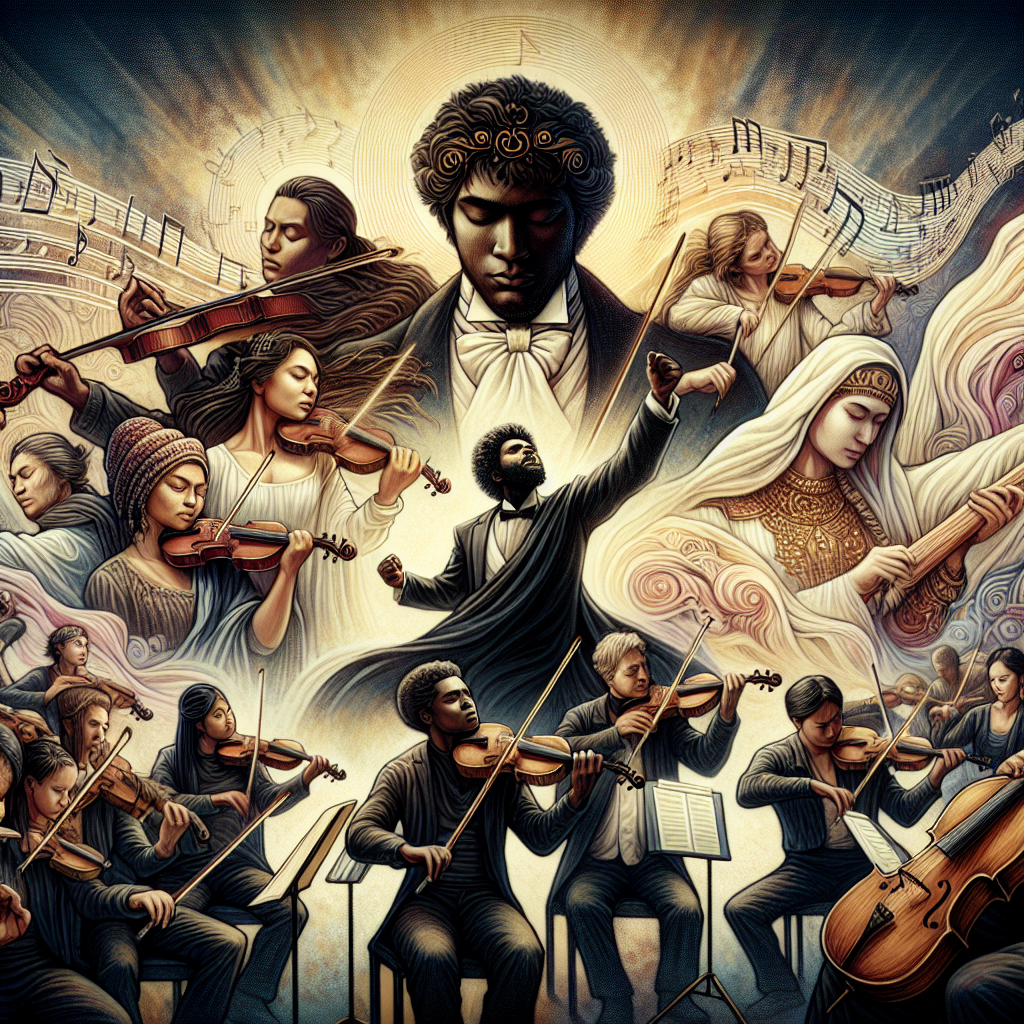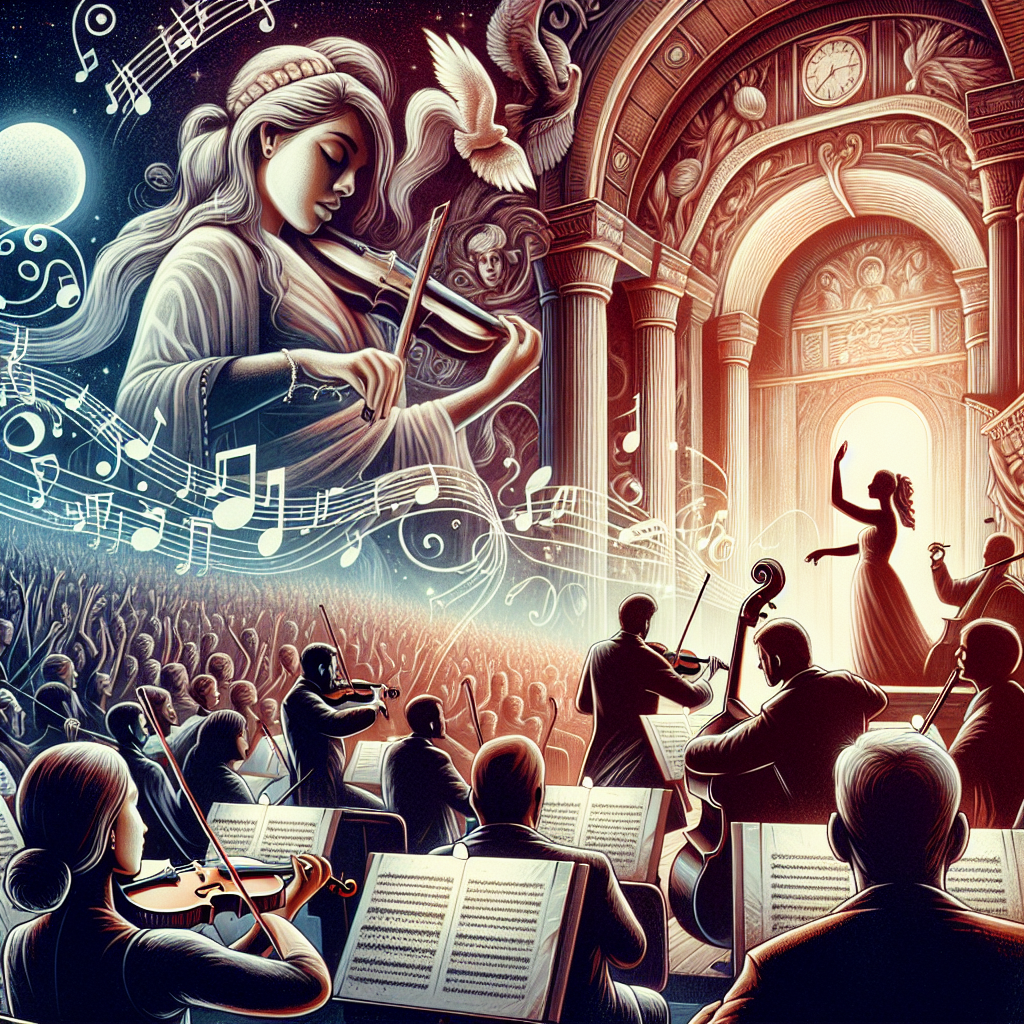
Heroism and Humanity: Themes in Beethoven’s Eroica
Ludwig van Beethoven’s Symphony No. 3, also known as “Eroica,” is a work of immense depth and complexity, celebrated not only for its groundbreaking musical innovation but also for its profound exploration of themes such as heroism and humanity. Composed during a pivotal period in Beethoven’s life, this symphony stands as a testament to both his resilience and his extraordinary artistic vision. The Eroica Symphony marks a significant departure from the conventions of the time, providing a rich tapestry of emotions that range from grandeur and struggle to introspection and triumph.
Beethoven composed Symphony No. 3 between 1803 and 1804, a time when the composer was grappling with the devastating reality of his deteriorating hearing, a personal crisis that would impact him for the rest of his life. Despite this enormous challenge, Beethoven’s spirit and creative fire remained undiminished, as evidenced by the boldness and scope of the Eroica. Originally dedicated to Napoleon Bonaparte as a symbol of heroic ideals, Beethoven famously withdrew the dedication upon learning that Napoleon had declared himself emperor, promptly retitling the work “Sinfonia Eroica, Composed to Celebrate the Memory of a Great Man.”
Beyond its historical context, Symphony No. 3 is characterized by its remarkable emotive power and structural innovation. The work distills a sense of heroism not merely in a military or grandiose sense but as an exploration of the human condition, embodying both the individual’s struggle and collective aspirations for freedom and justice. The symphony reflects an artistic odyssey, drawing audiences deep into Beethoven’s world of sound, where music transcends mere auditory experience to become a philosophical exploration of the heroic spirit.
This article delves into the thematic essence of Beethoven’s Symphony No. 3, examining its rich tapestry of heroism and humanity. Through a detailed exploration of Beethoven’s life, the historical significance of the Eroica, and an analysis of its thematic constructs, we aim to uncover the profound messages embedded within this masterpiece, offering a deeper understanding of Beethoven’s revolutionary impact on music and society.
Beethoven’s Life and Compositional Landscape
The journey into Beethoven’s symphonic world cannot begin without acknowledging the personal and societal currents that shaped his compositions. Born in Bonn in 1770, Ludwig van Beethoven was thrust into music from an early age, showing prodigious talent that was nurtured under the guidance of his father and, later, prominent musicians like Christian Neefe. By the time he settled in Vienna in 1792, he was already celebrated for his virtuosity as a pianist and growing prowess as a composer.
However, Beethoven’s life was far from idyllic. The early signs of hearing loss in his late twenties marked the onset of a profound personal crisis. This affliction, which he initially kept hidden, threatened his career and well-being, leading him into periods of deep despair. Yet, instead of extinguishing the flame of his creativity, these trials seem to have fueled a new ardor within Beethoven, pushing the boundaries of musical expression to new heights.
The early 1800s were a time of great political and social upheaval across Europe, largely due to the Napoleonic Wars. Beethoven, initially an admirer of Napoleon, was inspired by Enlightenment ideals and the revolutionary fervor sweeping through the continent, ideals which he believed Napoleon embodied. These influences filtered into his music, allowing him to channel his inner turmoil and the zeitgeist of his surroundings into creative verve.
Such was the backdrop to which Beethoven composed the Eroica Symphony. This period, often referred to as his “Heroic Phase,” was marked by compositions that ventured into unprecedented emotional territories and structural innovations. During this phase, Beethoven’s works became increasingly ambitious, embodying a spirited defiance against his personal demons and societal injustices. Symphony No. 3 became one of the brightest exemplars of this defiance, offering a richly layered narrative of personal and universal heroism.
The Evolution of a Revolutionary Work
When Beethoven embarked on crafting Symphony No. 3, he did so with aspirations that exceeded the confines of traditional symphonic form, aiming for a fusion of drama and narrative seldom found in symphonic works of the time. The symphony was a monumental leap from his earlier compositions. Unlike his First and Second symphonies, which adhered somewhat closely to the classical idiom established by his predecessors, the Eroica shattered expectations, expanding the scope and scale of what a symphony could be.
Originally intending to dedicate the piece to Napoleon, Beethoven’s vision of heroism was initially intertwined with the French leader’s revolutionary credentials. Yet, upon the news of Napoleon’s ascension to emperorship, Beethoven’s perception of him transformed from an ideal to a tyrant, catalyzing one of the most dramatic and personal episodes in Beethoven’s life – the vehement erasure of Napoleon’s name from the symphony’s title page. This act not only reflected Beethoven’s disillusionment but also symbolized a broader human struggle against betrayal and the loss of ideals.
Yet, the thematic essence of the Eroica persisted, bound to the universal quests of heroism and human achievement beyond the political narratives of the day. The symphony’s expansive range, with its unpredictable shifts, dynamic contrasts, and the intricate interplay of motifs, mirrors Beethoven’s own psychological rigidity and resilience. It became not just an ode to a single man or notion, but a musical articulation of the inexhaustible human spirit.
The public reception of the symphony was as prodigious as its substance. Its initial performances were met with both awe and bewilderment; audiences were confronted with a symphony that exceeded the typical framework of its predecessors, demanding a deeper level of engagement. However, as time ensued, critics and connoisseurs alike acknowledged it for what it truly was: a revolutionary masterpiece that redefined symphonic music forever.

Dissection of Thematic Constructs in Symphony No. 3
The thematic elements of heroism and humanity in Symphony No. 3 are deftly entwined, creating a narrative arc that resonates deeply with listeners. The symphony opens with a powerful, arresting motif that sets the tone for the heroic quest. The first movement (Allegro con brio) is perhaps the most emblematic of heroism. Its driving rhythms, unexpected harmonic shifts, and profound dynamic challenges paint a heroic narrative reflective of struggle and ultimate triumph.
The second movement, a funeral march (Marcia funebre: Adagio assai), is a poignant and somber reflection on the inevitable struggles and losses inherent in the human journey. This movement taps into the depth of human emotion as it traverses feelings of sorrow and lamentation, ultimately resolving in a hopeful yet dignified culmination.
The third movement (Scherzo – Allegro vivace) re-ignites the adventurous and more optimistic spirit with its lively tempo and spontaneous bursts of energy, portraying resilience and an unyielding quest for renewal and joy. It stands in stark contrast to the sobriety of the previous march, illustrating the balance between hope and despair, which Beethoven masterfully intertwines.
The final movement (Finale: Allegro molto) brings the symphony to a triumphant resolution, blending themes from the previous movements into a vibrant tapestry of variation and development. This movement symbolizes the achievement and celebration of humanity’s potential and strength, epitomizing the hero’s journey through to resolution, not just in terms of plot but also explanatory personal development and reconciliation.
Beethoven’s innovative use of motifs and developmental techniques gave birth to the modern symphony as we understand it today. His ability to weave diverse thematic elements into a coherent and cohesive narrative speaks to his genius, marking Symphony No. 3 as a landmark in Western classical music.
Societal Impact and Legacy of the Eroica Symphony
The impact of Beethoven’s Symphony No. 3 extends far beyond the boundaries of classical music, resonating with the broader cultural and societal shifts of its era. Its debut in 1805, amidst a Europe in turmoil, brought to light the ability of music to capture and reflect the collective consciousness of a society. At a time when many struggled with the disruptions incited by war and political change, the Eroica Symphony offered a form of artistic respite and contemplation.
Beethoven’s defiance against conventional musical structures mirrored societal shifts towards revolutionary change, as societies grappling with tyranny and calls for reform sought inspiration in narratives of heroism and triumph. The themes within Eroica, though personal, echoed wider human struggles, symbolizing hope during uncertain times and challenging individuals to elevate their ideals and actions towards a greater cause.
The symphony’s legacy is far-reaching. It not only redefined symphonic structure and expectation, paving the way for future composers like Brahms and Mahler to explore their creative realms but also solidified Beethoven’s reputation as one of history’s pivotal artistic figures – a composer who spoke profoundly to the timeless human spirit. As the symphony was repeatedly performed across Europe, it catalyzed a re-evaluation of music’s role, shifting perceptions towards understanding music as a medium of profound emotional and intellectual communication.
The Eroica did not merely entertain; it invited listeners to journey alongside the protagonist within the symphony – the hero within all of us. It challenged audiences then, as it does today, to confront their limitations, examine their experiences, and emerge resilient and renewed, much like the very essence of Beethoven’s stunning and insightful creation.
Conclusion
The exploration of themes such as heroism and humanity through Beethoven’s Symphony No. 3, the Eroica, underscores its monumental position within the annals of musical history. The symphony’s conception during a time of personal adversity and widespread societal transformation reflects Beethoven’s own struggles and ambitions, imbuing the piece with a powerful dual narrative that has captivated audiences for over two centuries.
Through his masterful manipulation of musical motifs and innovative structural expansions, Beethoven’s Eroica transcends the boundaries of a mere artistic endeavor to become an introspective lens on the human experience. This symphony did not just alter the trajectory of Western classical music; it inspired a discourse on the power of art to reflect the human spirit’s valiant stance against the trials it faces.
In our present day, Beethoven’s Symphony No. 3 continues to resonate, its themes all the more relevant as listeners navigate the complexities of modern existence. It stands as a beacon, reminding us of the virtues of resilience and the potential within the human spirit to rise above challenges with renewed conviction and hope.
As we conclude our reflection on Beethoven’s seminal work, we are reminded of his indelible impact on not only the realm of music but also the wider tapestry of cultural evolution. Eroica remains a celebration of life’s trials and triumphs, a nuanced portrayal of our ceaseless pursuit of heroism and understanding, and a testament to Ludwig van Beethoven’s enduring legacy as a composer of boundless insight and invention.